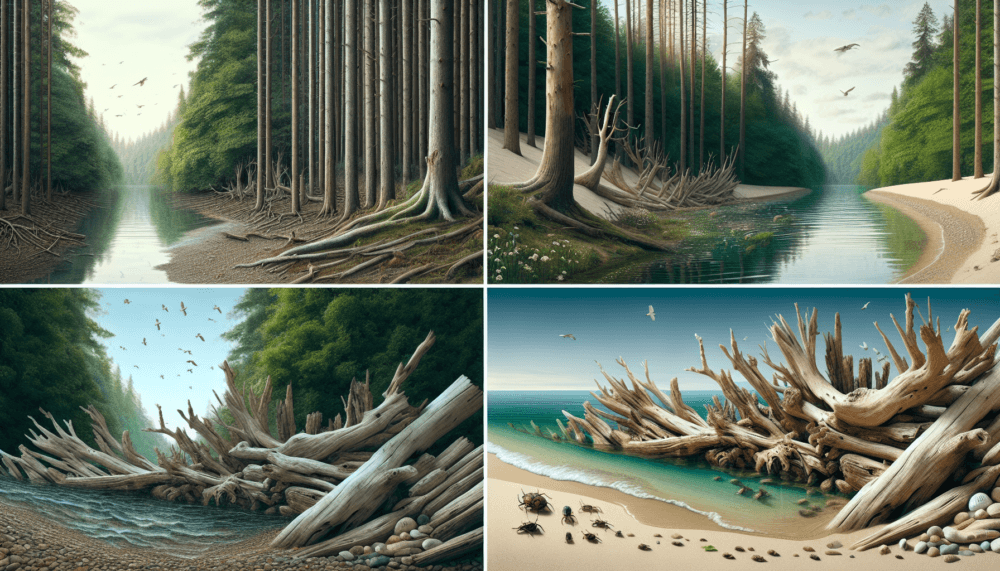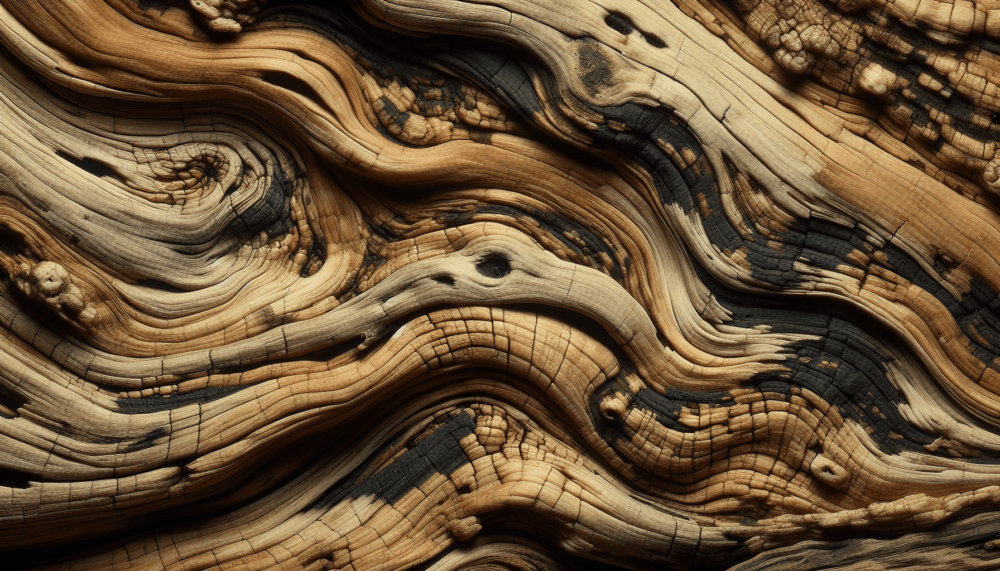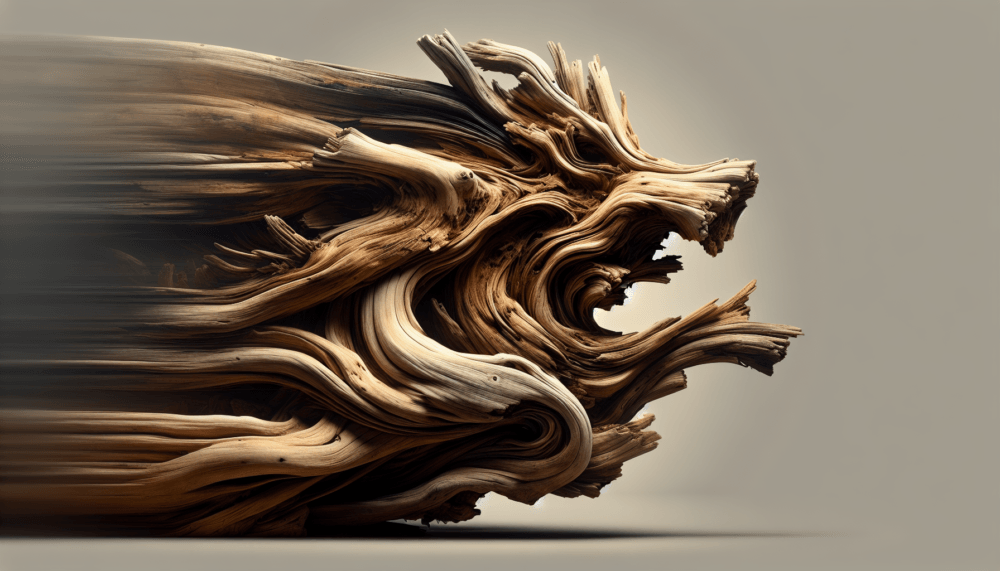Have you ever wondered about the lifespan of driftwood? From beachside bonfires to unique home decor, driftwood has become a popular natural element that adds a touch of rustic charm to our lives. But just how long can we expect our beloved driftwood pieces to last? In this article, we will explore the factors that influence the durability of driftwood and unveil the secrets behind its longevity. So, grab a cup of tea and join us as we dive into the fascinating world of driftwood and its enduring beauty.
Factors Affecting the Lifespan of Driftwood
When it comes to the lifespan of driftwood, several factors come into play. These factors can determine how long the driftwood will endure and remain usable. Understanding these factors is crucial if you want to make the most out of your driftwood. Let’s take a closer look at each factor:
Type of Wood
The type of wood used in driftwood plays a significant role in its lifespan. Different types of wood have varying levels of durability and resistance to environmental factors. One of the primary distinctions in wood types is hardwood versus softwood. Hardwood, such as oak or mahogany, is generally stronger and more long-lasting compared to softwood, such as pine or cedar. Additionally, the specific wood species itself can also affect the durability and longevity of driftwood. Some wood species, like teak or cedar, are naturally more resistant to decay, insect infestation, and the effects of weathering.

Environmental Conditions
The environmental conditions in which the driftwood is exposed greatly impact its lifespan. Factors such as climate, temperature, humidity, and the salt content in the air can all affect the driftwood’s longevity. For example, if the driftwood is consistently exposed to high humidity or extreme temperatures, it may deteriorate more rapidly. Similarly, if the salt content in the air is high, as is often the case in coastal areas, the driftwood may be prone to faster decay and erosion.
Exposure to Water
The exposure of driftwood to water is another critical factor influencing its lifespan. Whether it is saltwater or freshwater, the type of water the driftwood comes into contact with can have different effects. Saltwater can accelerate the degradation of driftwood due to its corrosive properties, while freshwater may be less harmful. The depth and duration of submersion also play a role. Driftwood submerged at greater depths and for longer periods may experience increased wear and tear due to water movement and erosion.

Exposure to Sunlight
The exposure of driftwood to sunlight can significantly impact its lifespan. UV radiation from the sun can cause degradation and discoloration of the wood over time. The intensity and duration of sunlight exposure should be considered as well. Driftwood exposed to direct sunlight for prolonged periods will likely experience more significant damage compared to driftwood that is shielded or only exposed to indirect sunlight.
Contact with Soil
When driftwood comes into contact with soil, several factors can influence its durability. The mineral content of the soil can affect the rate of decay and decomposition, while microorganisms present in the soil may contribute to the breakdown of the wood. Additionally, chemical reactions between the wood and the soil can occur, potentially speeding up the decomposition process. Therefore, the type of soil and the duration of contact should be considered when determining the lifespan of driftwood.
Pest Infestation
Pests can significantly impact the lifespan of driftwood. Termites, wood-boring insects, and marine borers are common culprits that can cause considerable damage to driftwood. These pests feed on the wood, weakening its structure and making it more susceptible to decay and breakage. Regular inspections and appropriate pest control measures can help mitigate the risk of infestation and prolong the lifespan of driftwood.
Presence of Decay-Causing Fungi
Decay-causing fungi can also contribute to the deterioration of driftwood. Different types of fungi, such as brown rot, white rot, and soft rot, can break down the wood fibers and diminish its strength. These fungi thrive in moist and humid environments, making it essential to keep driftwood dry and well-ventilated to minimize their presence. Regular inspections and prompt treatment can help prevent the spread of decay and extend the lifespan of driftwood.
Size and Density of Driftwood
The size and density of driftwood have an impact on its lifespan as well. Thicker and denser pieces of driftwood tend to be more durable and resistant to decay compared to smaller or less dense ones. This is because thicker wood generally contains more lignin, a natural polymer that provides structural strength and resistance to decay. The weight of the driftwood can also determine its durability, as heavier pieces are less likely to be carried away by strong water currents or winds. Additionally, the porosity of the wood can affect its water retention and susceptibility to decay.
Human Interaction
Human interaction with driftwood can influence its lifespan. Rough handling, excessive weight or pressure, and constant movement can cause physical damage to the wood, making it more susceptible to decay and breakage. Therefore, it is essential to handle driftwood with care and avoid unnecessary stress or strain. Consideration should also be given to the placement of driftwood, ensuring that it is not subjected to constant impacts or disturbances.
Maintenance and Treatment
Proper maintenance and treatment can significantly affect the longevity of driftwood. Regular cleaning, particularly to remove dirt, debris, and algae, can help prevent the buildup of moisture and minimize the risk of decay. Sealing the driftwood with an appropriate sealant can provide an additional layer of protection against water damage and UV radiation. Additionally, the application of wood preservatives can help prevent pest infestation and fungal decay, extending the lifespan of the driftwood.
In conclusion, the lifespan of driftwood is influenced by a variety of factors. From the type of wood and environmental conditions to exposure to water, sunlight, and soil, each factor plays a role in determining how long the driftwood will last. Pest infestation, the presence of decay-causing fungi, and the size and density of the driftwood also contribute to its longevity. Furthermore, human interaction, maintenance, and treatment play crucial roles in extending the lifespan of driftwood. By understanding these factors and taking appropriate measures, you can ensure that your driftwood remains beautiful and usable for an extended period.




